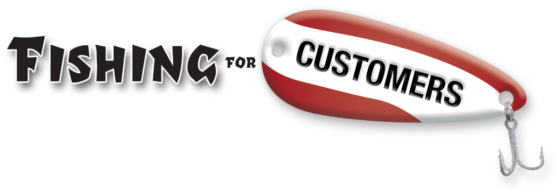A couple of decades ago I introduced a friend who sold pianos to the manager of a local radio station. The manager suggested that the piano salesman consider radio advertising sales. The salesman refused.
“Sometimes advertising works,” he said, “and many more times it doesn’t. The worst part is you can never predict which is going to happen. I couldn’t in good conscience sell something that I don’t believe will work.”
Ouch.
Is advertising more of a gamble than a science?
 If advertising is an investment, you should expect to see a predictable profit from that investment. Invest a dollar in advertising, get back four, or five, or six. At the very least, shouldn’t you get back a dollar ten?
If advertising is an investment, you should expect to see a predictable profit from that investment. Invest a dollar in advertising, get back four, or five, or six. At the very least, shouldn’t you get back a dollar ten?
But if you you don’t know whether your ads are driving revenue, you can’t very well call it investing. If you don’t know whether you’ll win, or lose, or break even, you are gambling.
And if you put your money into ads that you “feel” are working, but but can’t measure their effect, you’re still gambling.
Noted investor Peter Lynch once said, “An investment is simply a gamble in which you’ve managed to tilt the odds in your favor.”
So, maybe effective advertising is that which has been tilted in your favor. Not so much an answer, as a process, which includes better targeting, more effective messaging, and improved media selection.
The purpose of an ad budget?
The reality is that most of us fear that we aren’t turning our marketing dollars into profit. Not consistently. Not directly. Which is why we have advertising budgets. To limit risk.
An ad budget serves the same purpose as going to the casino with a hundred dollars in your pocket and saying “When this hundred is gone I’m done playing. Maybe I’ll get lucky. But I’ve got to set a limit on how much I can afford to lose.”
Think about it. If you knew you were going to get back more than you spent, why would you ever stop spending?
Perhaps You Need a Lever.
The Greek mathematician, Archimedes, understood leverage. He’s reported to have said, “Give me a long enough lever and a place to stand, and I will move the earth.”
When applied to advertising, leverage means doing more with less. Getting more bang for your buck. Controlling large sums of revenue with relatively small sums invested in advertising. Stacking the odds in your favor.
But, if you were capable of stacking those odds, wouldn’t you also be running more advertising?
A surprising number of companies try to avoid advertising, then force themselves run ads when sales are down or when they have excess inventory.
Unfortunately, they’re open for business all of those other days, too. And they need customers to come buy what they sell on every one of them.
That constant need for additional sales makes advertising the most important thing any of us can do for our own business. What other activity can multiply raw dollars with this kind of leverage?
First, measure.
Do you know your rate of return?
Note your sales levels. Run your campaign. Note any change in your sales levels.
Divide increase by the amount spent. This is Return On Advertising Investment (ROAI). If you are bringing in more money than you are spending, your ROAI is positive. Congratulations.
Of course if your advertising is not effective, the negative ROAI produces a constant drain on your resources. Is this why you don’t advertise often? Do you justify the resulting poor return as “getting your name out there?”
How effective is your lever?
Is your advertising an investment or a gamble?
The primary question you must ask is the rate of your ROAI. This is the most important question when you’re fishing for customers.
Your Guide,
Chuck McKay
 Your Fishing for Customers guide, Chuck McKay, gets people to buy more of what you sell.
Your Fishing for Customers guide, Chuck McKay, gets people to buy more of what you sell.
Have you calculated the rate of your Return On Advertising Investment? How good is it? Are there simple changes that could improve your ROAI? Start a conversation with Chuck by email at ChuckMcKay@ChuckMcKayOnLine.com. Or call him at 317-207-0028.

